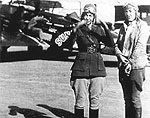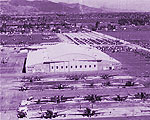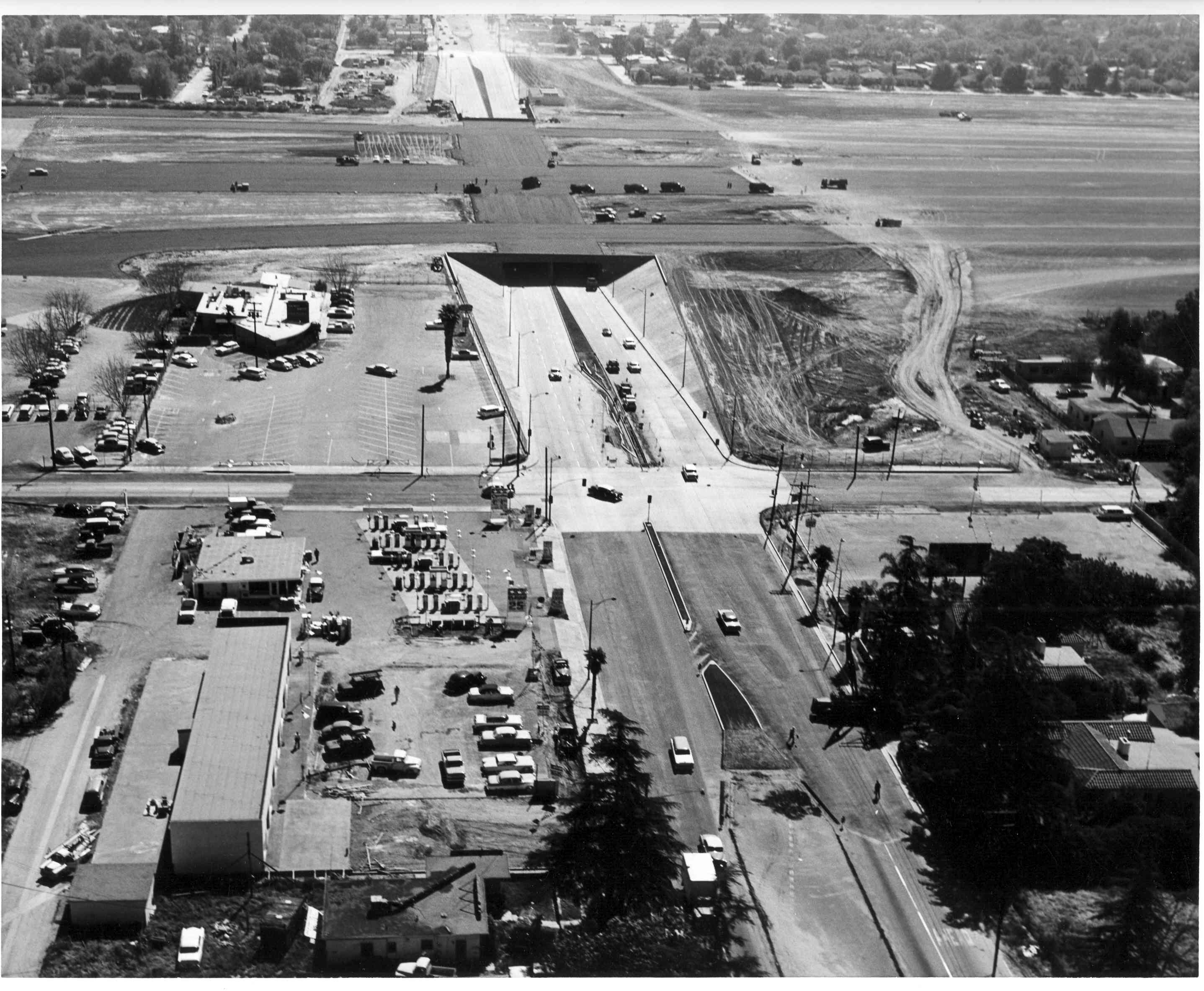Van Nuys - History
More than 100 years ago, on Dec. 17, 1903, Orville and Wilbur Wright made history when their Wright Flyer became the first aircraft to achieve sustained, powered flight.
This feat launched the modern era of aviation, which took off in Southern California just a quarter-century later with the establishment of the forerunners of both Los Angeles International Airport (LAX) and Van Nuys Airport (VNY). The growth of both airports in years to come helped make the Southern California region a major part of the aviation and aerospace industries in the 20th century.
LAX opened as Mines Field on Oct. 1, 1928, with the signing of a lease of 640 acres to use as an airport for the City of Los Angeles. Soon after – on Dec. 17, 1928, the 25th anniversary of the Wright Brothers’ first flight – VNY was born as Metropolitan Airport through the establishment of a corporation by a small group of citizens.

|
|
| circa 1929 | |
The 1920s and 1930s
Located about 20 miles north of today’s LAX, amid 80 acres of trees and farmland, Metropolitan Airport – with its initial biplane hangar fees of $35 per month and landing fees of 50 cents – was a place where pioneering pilots who had faith in the future of aviation could fly their “new-fangled flying machines.”
In its early years, VNY served as the base for many record-breaking flights, including:
-
A men’s solo endurance record of 37 hours, by Herbert Fahy, in 1929.
-
A women’s endurance record of 42 hours, by Elinor Smith and Bobbi Trout, in 1929.
-
A women’s speed record of 196 mph, by Florence “Pancho” Barnes, in 1930.
Hollywood stars discovered the airport too, with Gene Autry, Cecil B. DeMille and Howard Hughes among the celebrities who flew there.
Although the Great Depression put an end to the corporation that established the airport, Hollywood film production, which like the stars themselves had found a home at the airport, helped save it. Filmmakers used the site for scenes from famous movies such as Casablanca, Hell’s Angels, Lost Horizon, Men with Wings and Storm Over the Andes.
To this day, producers of movies, TV shows, videos and commercials frequently turn to VNY to help meet their filming needs. Just a few of the modern-day scenes shot at VNY include Shark Tank, Glee, The Office, Red 2 and It’s Always Sunny in Philadelphia.

|
| circa 1944 |
The 1940s
With the outbreak of World War II, in 1942 the U.S. government purchased Metropolitan Airport and converted it into a military base to help protect the West Coast. The military also purchased an additional 163 acres of land for the construction of the Van Nuys Army Airfield, using new runways to train hundreds of P-38 Lightning pilots.
The airport became a vital defense-manufacturing center during the war. In 1944, a joint venture between the U.S. Navy and Lockheed Corporation created an aircraft modification facility known as the Navy Lockheed Plant. In the meantime, Hollywood continued to use the airport for filming, most notably when scenes from the classic Casablanca were filmed at the airport. And one day, the entertainment industry that had become so important to Metropolitan Airport discovered a young woman on an aircraft assembly line. Her name? Marilyn Monroe.
In 1949, the City of Los Angeles purchased the airport from the U.S. War Assets Administration for the token fee of $1, with the agreement that the California Air National Guard base continue to operate at the site. The name of the airport, which by then covered 400 acres, changed to San Fernando Valley Airport.

|
| circa 1958 |
The 1950s and 1960s
In the 1950s, the Air National Guard entered the jet age by replacing its propeller fleet with F-86 jets, plus built newer, more permanent facilities at the airport.
The 1950s brought substantial growth to general aviation at the airport and local industries. By 1957, the annual payroll of airport companies reached an impressive $43 million and the airport experienced its final name change to Van Nuys Airport. Residential growth also continued. The City of Los Angeles Zoning Commission allowed developers to build 150 new homes in areas surrounding the airport. In 1959, completion of the Sherman Way underpass enabled extension of the main runway from 6,000 to 8,000 feet as VNY ranked 25th in operations nationwide.
In the 1960s, airport operations continued to increase, with aerospace companies and their space-age projects beginning to locate at the airport. VNY acquired new land to meet these needs, and as the airport grew, in the mid-1960s VNY launched its award-winning guided tour program. By opening its doors to the local community, the airport offered a captivating journey through aviation past and present. VNY continues to offer tours today, giving thousands of adults and children a close-up look at the airport each year.
The Van Nuys Golf Course was completed in the clear zone at the south end of the airport in the late 1960s, and a new control tower was constructed that is still in use today. In 1969, Beechcraft West assumed ownership of the Norman Larson Company and Litton Industries erected a 1,500-square-foot hangar and office facility at the airport.

